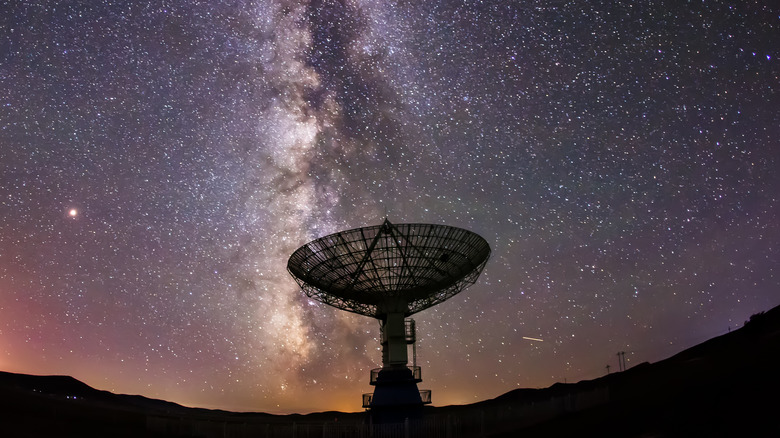Scientists Now Studying Light From Orphaned Stars
There are few places in the universe so lightless as the frozen chasms between galaxies — or so it might appear. Lurking in those spaces are the dimly burning spheres of so-called orphan stars, which have been ejected from their celestial homes and set adrift. Scientists are getting their first glimpses at these astronomical curiosities thanks to a new imaging technique detailed in a recent study.
A galaxy is a collection of hundreds of billions of stars, and the enormous voids between galaxies are essentially empty. Most stars are born inside a galaxy's dust clouds where they tend to stay for the rest of their days, held tight by the galaxy's gravitational pull. But sometimes the complex interplay between all of those stars swirling around each other causes one to be flung from the galaxy entirely, like a cosmic game of snap the whip.
The light emitted from the wandering stars between galaxies — called 'intra-group light' — is hard to see because it's outshined by the nearby galaxies. Imagine trying to use a pair of binoculars to look at a candle hovering a couple miles above the surface of the sun. "The brightest parts of the intra-group light are ~50 times fainter than the darkest night sky on Earth. It is extremely hard to detect, even with the largest telescopes on Earth — or in space," said Dr. Cristina Martínez-Lombilla, the study's lead author, in a statement.
Hiding in dark and distant places
The intra-group light of these galaxies has never before been observed. "We know almost nothing about intra-group light," admitted Martínez-Lombilla. Any information scientists can gather about these elusive orphan stars would be, well, illuminating.
In this study, researchers looked at a group of galaxies that's very far away from Earth — about 1,000 times further than our nearest major galactic neighbor, Andromeda — which means they're looking 2.5 billion years into the past as well. "Unveiling the quantity and origin of the intra-group light provides a fossil record of all the interactions a group of galaxies has undergone and provides a holistic view of the system's interaction history," said Martínez-Lombilla.
To achieve these observations, the team created a complex program that's able to remove all the light from an astronomical image except for the intra-group light. It's an intricate task, and one missed step or small oversight can invalidate all of the results. Luckily, scientists expect to get a lot of use from this new tool. "What makes our technique different is that it is fully Python-based so it is very modular and easily applicable to different sets of data from different telescopes rather than being just useful for these images," Martínez-Lombilla explained. "Our main long-term goal is to extend these results to a large sample of group of galaxies."

